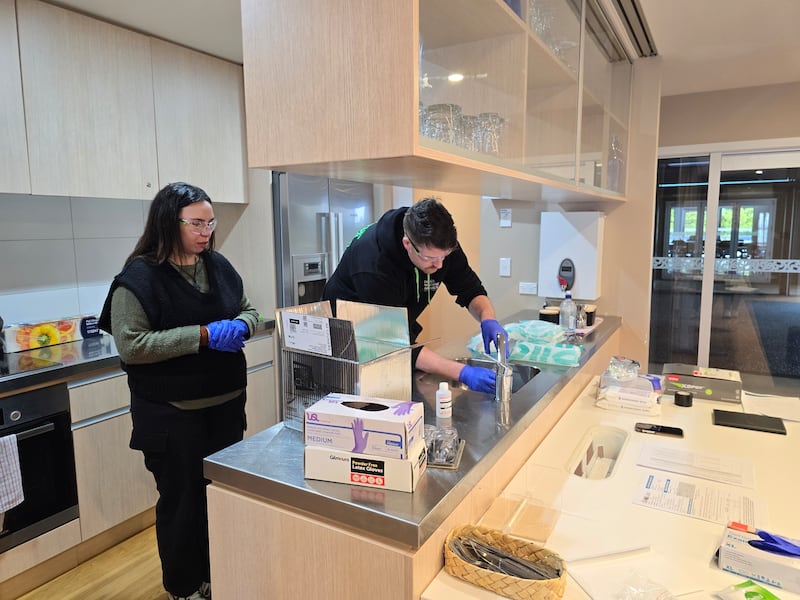Scientists are working closely with local iwi and communities, helping them understand the risks of contaminated water to human health.
“It requires a trusting relationship, that the scientists aren’t just gonna come in and take what they need and go away - but that comes in partnership with our people,” Te Niwha mana whakahaere Te Pora Thompson says.
“It absolutely must draw on the mātauranga of our people - that will, I believe, give sustenance to having a long-term impact on our wai and our people.”
Te Niwha is the national infectious diseases research platform whose scientists are partnering with communities across the motu, with an aim to protect Aotearoa from current and emerging infectious diseases.
One project Te Niwha is supporting is the ‘Burden of Waterborne Diseases’ - led by the Te Whare Wānanga o Waitaha (University of Canterbury’s) Associate Professor Tim Chambers and Connor Redmile (Ngāi Tahu) of Te Kura Taka Pini, the Ngāi Tahu freshwater group.
“We’ve been to the Ngai Tahu marae in our takiwā (district) and [are] training people up and completing drinking water tests, so they’ve got that power to do that themselves in the future,” Redmile says.

Nineteen Ngāi Tahu marae were examined by this group, which was also warning people about the pathogens in water.
“Some of our marae still operate [on] rainwater supplies, so basically water is falling [onto] the roof and then flowing down to tanks. And in some places, there are no barriers,” he says.
“If there are bird droppings, that can really become an unsafe supply.”
Redmile also advises practical steps to ensure whānau have safe drinking water.
“Flushing a tap is a good one - I recommend doing it every morning for one or two minutes. Another one you can do is boiling - a rolling boil typically kills the bugs in there.”
Redmile emphasises the importance of this project, as testing can often be expensive and inaccessible for many.
He says marae representatives carried out testing themselves, with the aim of upskilling and building local capacity within these areas.
Scientists are also using the latest metagenomic technology for this project, identifying the presence of acute gastrointestinal disease (AGI) microbes in drinking water, which are estimated to affect between 18,000 to 34,000 people in Aotearoa each year.
Chambers says this estimate was made almost 20 years ago, and highlights the timeliness of this project.
“Information from the project will provide insights into both the risk and best interventions to ensure all New Zealanders have access to clean drinking water,” he says.
Thompson also notes the impact these issues have on local pātaka kai, visiting a creek near Ruakura that once flowed abundantly with tuna, watercress, pūhā and fish.
“This is a really clear example of the state of our water. We used to be able to jump off this bridge, come here as children, swim, play. But it’s a far cry from where it once was,” she says.
“It was Sir Bob Mahuta who said to us a very long time ago, without research we’d be lost. And I think what he meant by that wasto go attain the knowledge, look further, peel away what else is there that we can do to support our people and our wellbeing.”



